I have written a lot about crypto trading in earlier newsletter issues.
In this issue, I’ll try to collect it together and add some more content as well.
Questions I get over and over again are where should I start, how much money should I bet, when do I know if it is a good time to trade, etc.,
While I can’t trade for you, I could maybe give you some info about where to start, and what to look for and give you more resources.
Trading is a jungle, and it’s easy to get lost in all the content out there.
Let’s start with an example that describes something called +EV (positive expected value).
Crypto is a game of probabilities, but most people treat it as gambling
Let’s do a very simplified exercise to illustrate how you can get +EV (positive expected value) on your bets.
Think about $BTC long-term and let’s make 4 scenarios:
I. $BTC will reach new ATH this year
II. $BTC will continue sideways in 2023, but make ATH in 2024/2025
III. $BTC has played its role, it will go down and stay there
IV. $BTC will go lower this year, but make ATH in 2024/2025
Now, let’s make some probabilities for each outcome:
I. Probability: 10%
II. Probability: 40%
III. Probability: 20%
III. Probability: 30%
$BTC is sitting at $20K at the moment.
What would be the best trade right now given the 4 scenarios?
I. Buy
II. Buy
III. Sell
IV. Buy
Buying is the best outcome in 80% of the scenarios.
I. 10% probability for a 240%+ upside
II. 40% probability for more than 240% upside long-term
III. 20% probability that $BTC will never come back
IV. 30% probability that we will lose money short-term, 240%+ upside for making money long-term.
For III you could make an invalidation point of let’s say 20%. In other words, you sell if $BTC goes below $16K
Summarized, you have an 80% probability of a 240%+ outcome, and a 20% probability of a 20% loss.
Worth the risk, right?
This was a very simplified example.
You might disagree with the scenarios and the probabilities, I just wanted to show how you could think in bets.
If you want to learn more about this, check out this great Substack article by @cobie which inspired me:
Now that a +EV bet is explained, let’s talk some more about trading and the life of a trader.
About trading:
You have to find your own way to trade. You can't blindly follow standard trading rules and expect to outperform. You must find an effective way to do what others don't.
You can trade stocks, forex, commodities, crypto, etc. Recently I’ve found an edge in crypto because there are inefficiencies that you can take advantage of. For example, when the news about Andre Cronje got out on Twitter that he wanted to focus on other things than DeFi (March 2022), it took at least 10-15 minutes before $FTM, $YFI ++ started to move down. In retrospect, this is one of the easiest shorts I’ve ever taken on Fantom. For me, this was a scalp short, but looking at how bad the market ended I should probably just keep it for months. My point is, that crypto is not as efficient as the stock market. When news breaks out in the stock market you can be sure that this is already reflected in the price seconds later.
Crypto has a lot of retail interest, and tbh there are a lot of idiots in crypto. By that, I mean people that just buy a random dogcoin and hope it goes to the moon. There’s a stark contrast between the smart people on CT and the people that follow Tik Tok influencers and BitBoy for crypto advice. Btw, I’m not referring to myself as one of the smart people here. I’m referring to GCR, Cobie, HighStakesCap, HsakaTrades, CryptoCred, Light +++. Could probably mention 50+ more here.
There is an advantage for the people that actually try to stay up to date on crypto and that are actively seeking alpha. As crypto matures I think the market will be less inefficient, and that it will be harder to trade (in the future). That’s why we need to take advantage of it today.
Playing The Market
The best option in hard market conditions is probably to just wait.
That's what I do for my long bags.
But because I'm following the markets constantly and spending a lot of time on Twitter, I also do some trades.
I trade news, I trade TA setups, and I trade on macro events.
Am I always successful? Absolutely not. But with good risk management, you could prevent big damage.
Some rules I've created for myself:
1) Never trade with leverage. Only spot. I only use leverage as a stop loss on future contracts in order to have less liquid money on exchanges.
2) Before you enter a trade, have a stop loss and a TP (take profit)
3) You can use any system to trade, but the most important thing is to be strict with your system. Discipline and human psychology is often our worst enemies in trading
4) Backtest your strategy with Pine Editor in Tradingview before you try it live
5) Also, before you trade live in the markets for the first time, open up a paper trading account
On top of that you should ask yourself a couple of questions before you start trading:
Why do you want to start trading?
What role does trading play in your life?
What are your goals?
What is your psychological profile?
What market do you trade?
What timeframe are you working with?
What trade setup do you use?
What are your entry & exit rules?
What are your risk management rules?
What are your back-testing data?
If you really want to learn trading I highly recommend this free course from one of the best traders out there, @CryptoCred:
It's 17 Youtube videos, so make sure to watch them all and take notes.
I've linked part I below.
Starting out with trading
A common answer among the traders is that they wanted to earn money. They saw trading as an opportunity to be free from the 9-5, to be their own boss, and to not have a cap on their income potential.
Trading is in a way very honest work. Your PnL never lies. If you choose the wrong side, you lose money. If you're consistently wrong you won't survive long-term. Only those willing to adapt will survive.
Trading is one of the few careers that allow you to have complete control of your time.
It’s you vs. the market.
Another common theme among the crypto traders is that they originally were poker players, or already were involved in some form of money speculation like stocks, forex, odds betting, casino games, etc, and saw crypto as an inefficient market that it was possible to take advantage of.
The average day as a trader
When most people think of traders they think about a glorious lifestyle with lots of free time, champagne, girls and travel.
However, most traders actually spend lots of time in front of the screen.
The well-known trader @HighStakesCap says this was how he lived his life for several years:
"Wake up, check the price, 15 minutes of cardio, breakfast, check Twitter and the market, talk with friends about the market, lunch, check the market and my positions, go to the gym or go out, restaurant and then check the market at the end of the day".
Also, check out this tweet from AlgodTrading below:
Algod's point here is that the flashy life with cars and party every day isn't true (at least for 99% of traders), but instead, it's grinding in your mother's dark basement, no sunlight for days, constantly browsing TG/Discord/Twitter/staring at charts, not participating in "a normal" life etc.
About motivation and making it in crypto
What may seem surprising to normies is that most traders actually don't think of trading as work. This is what they want to do. There is no end game. This is a competitive sport. The day you start thinking that you've made it is the day the game is over.
One of the crypto traders, @Cubantobacco, wrote this that really resonated with me:
"I believe making it means having the wealth to live as a perpetual traveler, being able to subscribe to flag theory and experience life through a series of global adventures. The idea that we should be bound to one room, one role, one town, and one life, is in my opinion, one of the cruelest tricks played on society. Making it, to me, is transcending that lie and having the means to live extraordinarily".
I found this section interesting because I feel that it is very relatable to me.
Btw, the Flag Theory is the idea that you should go where you are treated the best.
The goal is to diversify your personal and financial affairs so that no one government has control over you or your money.
Every time you base a part of your life in a new country, you plant a “flag” and diversify according to factors of geography, finances, law, lifestyle, taxes, business, health, politics, investment, and more.
I also tweeted about this a while back:

Some good trading advice from big crypto traders:
Money is made in the middle, don't obsess over tops and bottoms. Too many people try to time the market, but the truth is that there's money to be made all the time.
Almost no one has ever made and kept meaningful wealth by being a bear.
Forget your ATH account balance, get back on the horse, and trade with your new balance rather than holding on to what could have been.
Anecdotally, if you start sending fellow traders screenshots of your PNL, it’s probably time to take profit.
I feel like everyone needs to find a way of trading that makes sense to them personally.
Important traits to have as a trader:
There are a few, but important ones are probabilistic thinking, common sense, self-awareness, resilience, patience.and the ability to delay gratification.
Most people that play the markets are short-term thinkers. It makes sense - they were likely attracted to this game by the allure of making a lot of money. Short-term thinkers tend to be more emotional. They are the people who get bearish at support and bullish at resistance. People who can play the long game are the ones who tend to perform best.
Hard work, screentime, conviction, and self-restraint are ingredients to make it.
Also having an obsessive-compulsive personality or mildly autistic traits are probably not a disadvantage.
You should have an endurance mindset and be willing to spend far more time on crypto than 99% of people.
Fortune is made by big wins, not by compounding small ones. Patience to bet big is critical. Most traders constantly change their view on the market under the pull of their emotions which is disastrous when combined with leverage. It takes a strong mind to handle the pressure and deal correctly with significant losses.
Trading can be just as intuitive as logical, but as traders, we tend to overcompensate with our minds and neglect our intuition. You either have that level of intuition, or you don't. It sounds harsh, but most people aren't cut out for this life and will eventually be net-negative on their lifetime PNL.
Your mindset and control of your emotions are more important than charts. Most traders know it, but very few work on it.
Find a close group of friends you can learn with, share alpha with, and learn the painful lessons with. Having a close support group in this space is invaluable. Trading can bring tears of happiness, but it can also bring tears of panic. Both ends of that spectrum are better as a group experience.
Also remember that markets are cyclical.
Markets tend to trend only 20% of the time and range 80%, this is very important to understand cause they have completely different approaches.
If you feel like you know the very basics of trading, you should definitely read the thread below.
It will help you understand markets better and hopefully increase your PnL.


Inefficient markets are something I've discussed in several newsletters.
But I read a thread from @tree_of_alpha and was again reminded of how important it is if you want to have an edge in crypto.

As Tree of Alpha writes:
"The Efficient-market hypothesis states that at all times, asset prices reflect all available information. This is only partially true."
I fully agree with Tree of Alpha, because information can't be priced in at the exact moment it comes out.
When something news-worth gets out you have to either interpret it as fast as possible, guess how long time it will take before the effect of the news reflects the market prices, and/or try to understand how people will react to the news.
Let's do an example since it's always easier to understand concepts that way.
The hack on Binance Smart Chain Oct 6th 2022
An attacker stole 2 million BNB (~$566M USD) from the Binance Bridge.
The news broke out around 4 PM EST on October 6th.
In a matter of 90 minutes, $BNB fell 4.5%. That isn't too crazy in crypto, but the R/R (risk/reward) was great. That means low risk, potentially high reward.
Let's go through it with the help of a framework to see how we should play this.
How big was the hack from 1-10?
Let's check the leaderboard on REKT: https://rekt.news/leaderboard/
It's in the top 3. So the impact is maybe a 9/10. That sounds like a great shorting opportunity, right?
Consequences for Binance Smart Chain and the holders?
We didn't know at the time, but there was a risk of halting the chain. That's not positive, and a short seems even more tempting.
How will other players in the market interpret this news?
My common sense says this is a shorting opportunity, and the more people that see the news, the more people will try to short it.
How fast should you interpret this?
As fast as possible.
----
All right, this was very simplified. But it just shows my thinking at the time of the news.
Most traders tend to focus too much on the rewards side and not enough on the risk side.
If you regulate a portfolio with sentiments and not discipline, then be prepared for an explosive and depleting ride.
Your goal should be risk management, not risk avoidance. Risk can be managed by significantly controlling the possibility and the amount of loss.
This leads us over to money management in crypto.
This is maybe the most important thing that I’ve written, and please don’t skip this part.
Risk in crypto trading is everything.
Money Management In Crypto
Let's pretend you're a trader.
You have $100, and you want to earn money from crypto.
But in order to make capital, you have to be a master of protecting your existing capital. That's why you need money management.
You want the money to last as long as possible, and you don't want to erase all your capital by one or a few bad trades.
Think of your $100 as your full bankroll ($100 is just chosen for the following examples in the text. It will be relevant if you have 5, 6, 7, 8, or even 9 figures net worth).
What is the optimal betting size (trading size) that maximizes profits, but also protects the downside in case you're wrong?
Meet John Kelly and the "Kelly Criterion".
The Kelly Criterion
The Kelly criterion (first proposed by professor John Kelly) calculates the proportion of one’s net worth to wager in order to maximize the expected logarithm of wealth increase.
It tells you how much to bet on every trade without ever going bankrupt.
Okay, back to our $100 example.
Let's look at the differences in the expected outcome if you do 1,000 trades and you bet respectively 1%, 2%, and 4% of your bankroll every time. In other words, if you bet 1%, you're risking $1 the first bet. If you lose 10 trades in a row, your total portfolio is now worth $90 (and therefore your bet size is now $0.90, which is 1% of your total portfolio).
Below the expected outcome is illustrated:
As the bet size increases, so does the profit.
But you can also see that the volatility increases the higher bets you take.
For example, you can see from the figure that after 590 bets (4% bet size), you've actually lost $50, which is equal to a 50% drawdown of your portfolio, meanwhile the 1% bet barely has a drawdown below $100.
But let's look at what happens if we increase the bet size gradually up to 25%.
Do you already see some surprises?
I can list several:
-The 8% bet size actually performs worse after 1,000 trades than the 1% bet size
-Both the 15% and 25% bet size makes you bankrupt after respectively 400 and 100 trades.
-The 4% bet gives the highest total return, but from a risk/reward perspective the 1% and 2% bet sizes look better because of lower total drawdown when you have a losing streak (and trust me, you will experience that from time to time).
At small bet sizes, the profit grows when we win. But at higher bet sizes, the big drawdowns makes it impossible for the portfolio to come back.
The optimal bet size
We can calculate how much we should bet by using the Kelly percentage below:
Every trade has an optimal trade size (let's call it K%, or the "Kelly percentage" of your portfolio).
This is the value that maximizes expected returns over many successful trades of similar risk.
How to calculate K:
Let's say that we take a trade on $BTC. You check your PnL stats from years back and find out that your win ratio is 51% of the time.
After studying the market, and looking at technical analysis you're spotting a trend. But since no one really knows how $BTC will perform next, we'll just assume that the probability that it goes up or down is 50%.
W = 50%
R = 51/49
So, K = 50% - (1-50%) x (49/51) = 1.96%
In other words, the optimal trading strategy that maximizes long-run returns if we were to wager again and again on this game is to risk about 2% of net worth each time.
Let's say your win ratio is 55%.
Then K = 55% - (1-55%) x (45/55) = 8.18%
Hmm. Let's stop and think about that.
Didn't we see in the start of this text that somewhere around 1 - 2% of your total portfolio should be the optimal bet size?
It's about time we discuss the drawbacks and disadvantages of Kelly.
Kelly represents the largest bet that could still be rational assuming no value is placed on risk.
However, betting anywhere near the Kelly-optimal amount is irrational by most standards.
To utilize the Kelly Criterion in the real world, be extremely conservative with your assumptions. Take the worst of various possible scenarios. Instead of betting a full-size Kelly, bet a fraction of the Kelly Criterion (maybe 0.3x to 0.5x).
Let's look more at this in the figure below:
We calculated that you should bet 8.18% of your portfolio ($8.18) in the last example by using the Kelly formula. The problem is that if we're wrong a lot, this could lead to a substantial drawdown of our portfolio.
Then why not bet a fraction of the original Kelly size? As you can see from the figure above you could actually bet 0.9x the Kelly size and still earn 99% (0.99 as in the figure) of the profit as with your original bet size.
So if we bet $8.18, you could bet $8.18 x 0.9 = $7.1, and it wouldn't matter since the profit would be almost identical (0.99 vs. 1.00).
In other words, lower risk but same reward.
A 0.8x fraction of Kelly gives 96% of the result with the full-size Kelly.
A 0.7x fraction of Kelly gives 91% of the result with the full-size Kelly.
A 0.5x fraction of Kelly gives 75% of the result with the full-size Kelly.
A 0.3x fraction of Kelly gives 51% of the result with the full-size Kelly.
For example, by always betting 0.3x of the Kelly-optimal bet size, you reduce the chance that you'll have an 80% drawdown of your portfolio from 1-in-5 to 1-in-213, but you still keep 51% of the growth of a Kelly-optimal bet.
The point of all of this is that if you size your bets small enough, your portfolio will survive to see the next big winner (i.e. will survive long enough for the positive expected value to play out).
Applying Kelly And Optimal Bet Size To The Real World
Okay, I get you anon.
Risking 1 or 2% of your total portfolio in every trade sounds boring.
If you have $100K, that means that you shouldn't risk more than 1-2% of your total portfolio.
But this is what most people don't understand about trading.
Risking 2% of your portfolio and betting 2% of your portfolio are not the same.
Confused?
Let me explain:
In trading, we use a stop loss. How big your stop loss is depends on what kind of trader you are and what trading style you have. Scalp traders have much tighter stops than for example swing traders.
Let's just assume that you use a 5% stop loss.
An example with taking a trade in $BTC
At the moment $BTC is sitting at $20,000.
We have $100,000 and wonder how much we should bet.
From Kelly, we saw that somewhere around 1-2% of your total portfolio should be risked.
Let's say that you want to risk 1.5% of your total portfolio.
Position size in $BTC = Risk % / Distance to SL %
1.5 / 5 = 0.3
Position size: $100,000 x 0.3 = $30,000
That sounds better, right?
You buy $BTC for $30,000, which is equal to 30% of your portfolio.
But you're only risking 1.5% because your stop loss is 5%.
Still confused?
You bought $BTC for $30,000. If $BTC goes down 5% ( $30,000 x 0.95) = $28,500.
It means that you have lost $30,000 - $28,500 = $1,500 which is equal to 1.5% of your initial $100,000.
In other words, your bet was 30% of your portfolio, but there was only 1.5% of the portfolio that was at risk.
A rule of thumb is to have a max. risk of 1-3% of your total portfolio.
How Low Should You Set Your Stop Loss
There's no 100% right or wrong answer, but we can try to generate a rule of thumb.
First of all, look at the table below:
It's important to understand this, because the bigger the stop loss, the more you have to earn to make it back.
For example, up until 10%, there's only an 11.1% gain that is required to break even. But at 50% it's actually a 100% increase to break even, and at 90% you need 900% to break even.
I don't think I've heard of traders using more than 20% stop loss, but if they do then that's more of an investing strategy IMO.
Personally, I like to cut my losses fast and usually use a stop loss of max 5-10% (usually 5%).
Some General Trading Advice
Most traders tend to focus too much on the rewards side and not enough on the risk side.
If you regulate a portfolio with sentiments and not discipline, then be prepared for an explosive and depleting ride.
Your goal should be risk management, not risk avoidance. Risk can be managed by significantly controlling the possibility and the amount of loss.
Before each trading day, you must mentally rehearse handling each position based on what can unravel during that day.
Planning plays an important role because it helps you to make good decisions when you need them the most. You can't control the crypto prices, however, you can monitor the amount you lose on each trade.
Always define your risk in advance. Not defining a predetermined level of risk may prove to be more fatal and costly than any other mistake.
Praying and hoping for a loss recovery can't be a part of your psychology if you want to achieve great trading results Sticking to rules and discipline and maintaining a positive reward/risk ratio will result in money inflow.
I haven't discussed take-profit strategies in this newsletter issue, I think that is something I should write more of in a coming issue. As with the stop loss, it really depends on what kind of trader you are.
If you are scalp trading on the 5/15M chart you want a tighter stop loss and a lower TP than if you're using the 4H/1D for swing trading.
Also, what assets should you trade? Which pairs? Which setups? Which indicators? I'll discuss this at a later point. I think what's important is to find something that works for you. There is no one golden strategy. As long as you have discipline and follow your plan, you have done a lot correctly already.
Why Stop Loss Is So Important
Just read this tweet over and over again until you understand it.
You should never underestimate how important it is to let your winners ride and cut your losses short.


Let’s Talk About Crypto News Trading
There are several ways to make it in crypto.
Right now most of us are only focusing on surviving, but let's talk a little bit about news trading (trading on crypto news in real-time).
News trading can be broadly classified into two categories:
Periodic or Recurring: This includes the scheduled releases of news that moves the markets, including CPI, FOMC, and quarterly earnings reports from companies. An example from the crypto world could be announcements from the CEO of crypto exchanges or a release of a new token on a CEX/DEX.
Unexpected or One-Time: These are bolts from the blue such as a terrorist attack, a sudden geopolitical flare-up, or for example rumors that an exchange is insolvent (think FTX), a returning DeFi-developer (news of Andre Cronje returning to Fantom), Binance CEO mention that they will help tokens that got hit hard because of the FTX insolvency, etc.
News can be specific to a particular coin or it can affect certain parts of the crypto industry or the markets as a whole.
A news trader can be seen as a type of day trader since they classically enter and close a trade on the same day.
They often focus on trading during times when the market is still heavily reactant to news developments. The time can be either immediately after the announcement of the news or the moments leading up to the announcement.
Trading the News
Here are a few examples of possible actions that a crypto trader could have taken in response to particular news events.
FTX announces they're insolvent
The rumors had been circulating for some time about insolvency, but Tuesday 8th of November at 5PM UTC+1, the CEO of FTX, Sam Bankman-Fried announced that Binance would buy FTX.

A news trader could react to this in the following way:
1) Binance, the number 1 exchange acquires the second biggest exchange = bullish $BNB (long)
2) FTX = insolvent --> short all tokens with Sam/FTX-involvement, eg. $FTT as the primary. Because what use case is it for $FTT now that the exchange is dead? Other examples: $SOL
Let's start with number 1. News breaking out that Binance is buying FTX is huge. Remember, that's one competitor less which should give Binance a huge advantage. What's more natural than buying $BNB which is the main Binance-coin? It increased by 17% in 1 hour after the news broke out. The observant reader sees that this retraced pretty quickly though.
And that's the hardest part of news trading. You can be right with your entry, but it's impossible to know if the token will:
a) pump at all
b) if it pumps, when should you get out? (answer, have a take profit or at least a mental take profit, or a trailing stop loss)
c) if it pumps, but then quickly retraces how long should you stay in (answer: you should already have a stop loss before you enter a trade)
All right, let's look at number 2. You could either go long $BNB, or you could look at the other side of the news.
Because if this is bullish for Binance, this has to be bearish for FTX, Sam Bankman-Fried, and the whole $SOL ecosystem, right?
Let's look at what happened with $SOL after the news broke out below.
As you can see, Solana was at a time 67% down in a matter of 24 hours. Personally, I wasn't that fast on this news, but I shorted it from $21 to $13 and made a little profit from it.
Again, the question is always how long should you be in a trade like this, and unfortunately, I don't have any good answer to this.
You need to plan a trade like this in advance so that you don't get emotional and end up losing money.
Once a month you have numbers coming out from FED where they decide the interest rate for the next month (FOMC). This is based on how the general economy is and of course the inflation (CPI). As you can see these are tradeable events.
For example, let's say that people are expecting the interest rate to increase by 0.5% before the FOMC, but when FED releases the data the actual increase is eg. 0.75%. The market should react in a bearish way to news like this because higher interest rates mean that businesses and companies in a growth phase (that have huge loans) have to pay more money on their loans = less money to reinvest into the company = slower growth.
At least this is true for stocks. This means that people are expecting slower returns on their money. But there's another important factor, because when the interest rate increases, it also means that normal people like you and me have to pay more on their mortgages, and thus less money left for investments = slower growth in the equity markets.
If the interest rate comes in lower than 0.5% (eg. 0.25%) we should expect to see a more bullish market, because of the opposite of what I just described above.
A similar case can be made for the CPI. If the inflation comes in higher than what's expected, it should be bearish. And vice versa, if the number comes in lower, the market will react bullishly.
Higher inflation means that our money has less buying power = people have to spend more money on their daily necessities and therefore less money goes towards investing.
These two events gather lots of traders, and when the news releases there are extremely volatile market conditions.
In a matter of minutes, we've seen $ETH swing by +/- 10% during these events. It could be a gold mine to trade during these events, but on the other hand, you could also end up completely rekt because of the volatility. If your stop loss is too tight it doesn't matter if you're long or short, because you're going to get stopped out no matter what.
Trading on FOMC and CPI is not my favorite news trading event because of the enormous amount of players that are trading them. Personally, I don't feel that I have an edge trading on them. You have to be extremely quick to catch this news for going long/short. If you don't react within seconds/minutes after the news breaks out, the opportunity might be gone.
Below is the chart for CPI from November 10th.
You can see that the price of $ETH increased by 7% within 15 minutes.
Actually, it's a little bit more complex than the chart shows because the biggest move happened within the first minute, and the volatility was so big that you could easily end up Giga REKT with too tight stops.
As I said, I feel trading CPI and FOMC is close to impossible. And to catch these wild moves you have to bet in advance which most likely is a gamble.
Andre Cronje is "back" - Example of A Trade on Fantom and Yearn Finance
You might remember that Andre Cronje "retired" from DeFi back in March 2022.
At the point of his announcement $YFI, $FTM, and other Andre-coins dumped immediately.
See below:
Well, in November 2022 (this month) some observant people saw that Andre Cronje has updated his profile on Linkedin and that he was back working on $FTM again. The news started to spread and around 20 minutes later Andre Cronje updated his status on Twitter saying the same.
Look at the thread below from Tree of Alpha explaining the whole situation:


Voyager - The Bankrupt Crypto Lender
There have been lots of talks about the crypto company Voyager after they became bankrupt after the 3AC blowup in June 2022.
When the news from Coindesk got out that Binance potentially were preparing a bid for Voyager the price of $VGX increased immediately.

Within 15 minutes the price increased by 41%. That's a lot in such a short time span. But again, to be so quick to trade is almost impossible.
This leads me to the next subject: the hierarchy of a news trader.
The Hierarchy Of A News Trader
Have you ever wondered where you are on the ladder in terms of catching a trade?


The Twitter user King G made an interesting tweet where he made a hierarchical ladder from A to G telling at which price you will enter a trade.
I recite from his tweet below with text here so you don't miss it.
The ladder:
A: Insiders, the team - this is generally where the news comes from so the team and fellow insiders accumulate well before the news is public
B: Coders who have found hidden endpoints (leaks), hackers who can see news websites postings early and are able to front-run the public news
C: Coders who have a speed advantage (@Tree_of_Alpha @tier10k and many others that aren’t public on Twitter)
D: Bots that market long/short on group C public tweets. Automated bots on select accounts will generally always be faster than the manual traders (with few exceptions)
E: Manual traders that are early and quickly analyze the implications of news headline
F: Manual traders that are late (even a few minutes can sometimes be late)
G: Laggards who trickle in once the news is blasted on everyone’s timeline and the price has gone up significantly
It’s important to understand where you are in this order when news trading.
The crypto market is incredibly inefficient (good for us) so some catalysts take time to properly price in.
In essence, if you are in groups E-G you need a greater fool to buy your bag for you to profit.
Personally, I'm in group E, but working with some people to make bots to get up to D or maybe even C.
Strategies of News Traders
1. Market familiarization
News traders educate themselves on their respective trading markets to make an educated investment or trading position decisions.
They study their respective markets by looking at historical data and price trends and identifying the relationship between certain news announcements and how they tend to affect prices in the market.
The market familiarization enables the news trader to take informed actions based on the increase or decrease in a security’s price, following an announcement.
2. Fading
Fading can be defined as the action of trading in the opposite direction of a predominant trend as market enthusiasm begins to fade. The strategy is popular among news traders.
An example can be the news of positive earnings for a stock before the market opens. The anticipation of taking a favorable position based on the announcement will result in the stock opening at a sharp high. A news trader will wait for the stock to peak amid the enthusiasm and then sell the stock as the optimism begins to fade.
It is not to say that the stock is no longer trading at a high, but rather to highlight that the news trader would’ve benefited from the highs and lows of the trading day.
The same could be done in crypto on any news really. If there's a gigantic green candle coming fast after a news story has broken out, there will at some point be a retrace (mean reversion). The question is just when.
3. Alerts and timing
Because news traders are reliant on news announcements, it is beneficial for them to keep up-to-date with the latest developments in their trading markets. It can be done by setting up alerts for the latest announcements and taking advantage of the right timing to enter or close a trade, depending on their set trading strategy.
In the end of this newsletter, I will share some Twitter lists that I use myself.
General tips for New News Traders
Know the dates and times of important events: Information on the dates and times of key market events such as FOMC announcements, economic data releases, and earnings reports from key companies is readily available online. Know this calendar of events in advance. Other important announcements could be from the leading crypto companies such as listing of new coins (Binance, Coinbase, Bybit++), AMA with founders, etc.
Have a strategy in place beforehand: You should plot your trading strategy in advance so that you are not forced into making rash decisions in the heat of the moment. Know your exact trading entry and exit points before the action begins. Calculate how much you should bet, your stop loss, your take profit, and if you should put on a trade at all. For example if CPI comes in at 7.8 - 8% you go long, if it's between 8.1-8.3% you stay flat, and if it's 8.4% or higher you go short. You could also plan a fading trading strategy (mean reversion).
Avoid kneejerk reactions: Make rational investment decisions based on your risk tolerance and investment objectives. This may require you to be a contrarian on occasion, but as successful long-term investors will attest, this is the best approach for successful crypto investing.
Cap your risk levels: Avoid the temptation of trying to make a fast buck by taking a concentrated long or short position. What if the trade goes against you?
Have the courage of your convictions: Assuming you’ve done your homework, consider adding to an existing position if the coin plunges to a level below its intrinsic value, or selling out to take profits in a coin that is wildly popular at the moment. So, intrinsic value in crypto is a meme, because how could we value it? Most people agree that $ETH has a value somewhere between $0 and $10,000. But exactly how much is pretty impossible. This is also why you've seen $ETH swing from $880 to $4,800 within the last 52 weeks.
See the big picture: Often, investor reaction to the news may not be as expected. You'd think an announcement of eg. CPI would lead to a sell-off in the crypto market. But if everyone thinks the same beforehand this may ring an alarm bell, because trading isn't easy and for every winner there is a loser, so expect to see different outcomes of your trades even if you think you know how it will play out beforehand. This shouldn't be a problem if you have proper risk management (see my earlier newsletter post about risk management here).
Don’t be swayed by market sentiment: Being overly swayed by market sentiment may tempt you to buy high—when euphoria runs rampant—and sell low when gloom and doom prevails. Consider the plight of the many hapless investors who were so spooked by the unrelenting tide of bad news in 2008 that they exited their equity positions near the lows, incurring massive losses in the process.
Know when to "fade" the news: Sometimes it is as important to ignore the news or “fade” it as it is to trade it. If you're in it for the long term, you can ignore the noise.
The Bottom Line
Trading the news is crucial for positioning your portfolio to take advantage of market moves and boost overall returns.
Also, some traders are only doing this and are making a living from it.
But again, this is not easy. To become profitable you might try to work on your edge for years. And even then, you might not become profitable.
Who To Follow on Twitter
These are some good accounts that can leak important news/info.
Start by following these 11 accounts and put on notification:
1) DB: https://twitter.com/tier10k
2) Tree of Alpha: https://twitter.com/Tree_of_Alpha
3) Cobie: https://twitter.com/cobie
4) Light: https://twitter.com/lightcrypto
5) Cred: https://twitter.com/CryptoCred
6) High Stakes Capital: https://twitter.com/HighStakesCap
7) Hsaka: https://twitter.com/HsakaTrades
8) GCR Classic: https://twitter.com/GCRClassic
9) GCR: https://twitter.com/GiganticRebirth
10) PeckShield: https://twitter.com/peckshield
11) Sam: https://twitter.com/samczsun
There are obviously several more accounts you should follow, but these 11 are a good start.
Twitter Lists
On these lists there are more names than the 11 people.
I use a combination of having people on notification and having them on lists. You will see my screenshot of Tweetdeck further down in this post.
1.
This is my ever-evolving news trader Twitter list: https://twitter.com/i/lists/1590828215161036815

2.
This is a good Twitter list from @Dhassan_77 called Essentials:
https://twitter.com/i/lists/1519624419487932416
As Dhassan_77 wrote himself about the list:
This list took me months to make and initially I used a system where I ranked each person within the list based on how accurate of a % their calls/investment theses are. I added those people and it helped me avoid noise. I think the smartest and most often “correct” people on CT are here.
3.
This is a list with good crypto traders:
https://twitter.com/i/lists/1530523194590998533
I mainly use Tweetdeck for these lists to catch the news in real-time.
A screenshot of what it looks like:
Trading Psychology
“Trading requires professionalism, consistency, discipline, repetition, and an ability to overcome repeated failure/disappointment”.
I don’t remember who said this, but I wrote it down in my notebook because I felt like it consisted of exactly what trading is all about.
Know Your Strengths And Weaknesses
As a trader, you need to know your strengths and weaknesses.
To start with myself I think my strengths are intuition, discipline, and good reading market movements. However, my weakness is that I often end up taking profits way too early (earlier than my plan, and in other words ruining my PNL). This has some negative consequences.
Let’s say my risk/reward for a trade is 1:2 (that means I risk losing 1 unit if I am wrong, but if I am right I win 2 units). Only taking trades like this should be a winning strategy in the long run (if your judgment of a 1:2 trade is correct obviously).
But to explain more about an error I make quite often, especially in scalp trading, let’s look at the current example:
Example
Let’s say you take a scalp 1:2 trade on $ETH, 2% SL, 4% TP, risking 1% of your total bankroll. Position size: Risk % / Distance to SL % = 1/2 = 50%.
Let’s say your portfolio is $100K.
You buy $ETH for $50,000, which is equal to 50% of your portfolio.
But you’re only risking 1% because your stop loss is 2%.
Confused?
You bought $ETH for $50,000. If $ETH goes down 2% ( $50,000 x 0.98) = $49,000.
It means that you have lost $50,000 - $49,000 = $1,000 which is equal to 1% of your initial $100,000.
In other words, your bet was 50% of your portfolio, but there was only 1% of the portfolio that was at risk.
A rule of thumb is to have a max. risk of 1-3% of your total portfolio.
Okay, back to one of my weaknesses that I tend to do often.
Let’s say I take the trade mentioned above, but out of boredom, I follow the trade closely. The trade starts deep underwater, let’s say that it at some point is -1.5% and I’m close to getting stopped. Then the trade turns around and it’s going positive and then crabbing around +0.5-0.7%. Because the trade started underwater my “fear system” alerts me and tries to convince me to secure some profit with the reasoning that I almost lost 2%, then I should secure at least some profits.
We react more negatively to a loss than positively to a similar gain. Likewise, we prefer steady gains instead of bigger lump-sum gains. This is called Loss aversion and is a very common bias to have among traders.
I find myself doing this as I said especially after being underwater at the start of the trade, and also if it’s late at night with the reasoning that I will sleep better if I close at breakeven, instead of sleeping badly knowing that I can lose (or win). But it is the potential loss I’m focusing on.
Let’s take a quick look at my scalp trading account below from the 1st to the 7th of January 2023 to illustrate what I mean.
I’ve taken 39 scalp trades during these 7 days. The win rate of 76.92% is pretty good, but that doesn’t help when my losses have been bigger than my gains.
Actually, I had 18 wins in a row and a perfect start to the year, but then my first loss came because I forgot to check funding. I ended up paying 2% to people who were in long positions. The position in itself actually ended slightly in plus, but since the funding rate was higher it’s shown as a loss, which is correct.
A little pissed off I wanted to make it back again quickly (yolo-mode), but just ended up losing for the rest of the day. Basically, a small tilt because I revenge-traded.
You can see on the chart that there are some small wins along the way after the first loss, but as I described earlier I became too defensive (I ended up taking profits way before my targets because I was so focused on not losing more). Unfortunately, I did the opposite of what you should do:
“Cut losers fast, let winners ride”.
I, on the other hand, cut the winning trades fast at a small profit and let my losing trades ride until I was stopped. It’s ironic because I knew exactly what to do, but I didn’t follow the plan. I let the psychology of my head get in the way of the psychology of trading.
Regarding some books to get better at trading psychology, check out this list:
Luckily spot buying of some coins has performed way better so far in 2023, so I’m not net negative for the year.
To end this, let’s look at some general rules I follow when I’m trading:
Some General Rules I Follow When Trading
Never chase the price unless you scalp (and have an edge in doing so). Let’s say you want to buy $ETH at $1,250, but the price is now $1,280. What do you do? Do you chase the price and market buy at $1,280 or do you place a limit order at $1,250? There’s no right or wrong answer as it depends on what kind of trader you are, but I believe most people would be better off limit buying at $1,250. A general rule is that the longer the timeframe you trade on, the more favorable it will be to place limit orders.
Always use a stop loss. An example of why you always should use an SL was very visible yesterday. $LDO was sitting at $1.64 before it suddenly pumped 65% in 15 minutes. Imagine being short at 1.64 and not even having a 5% stop loss (which means being stopped out at $1.72).
Instead, you got a 65% move against you, and are paralyzed by fear you can’t even do anything. Even using 2x leverage would have completely wiped out your account. It’s worth mentioning that the candle quickly retraced, but still, it stabilized for a while 30% up. Much better to lose “only” 5% by using stop loss IMO. In this case, your stop loss would’ve probably not been executed though as the price was rising so quickly and your stop loss was being gapped (your stop loss price was jumped past). So there are always risks trading crypto regardless of whether you have a stop loss.
Don’t get FOMO. I’m in several Discord groups and there’s always a move happening. There’s always a bull market for some coins. You just got to accept that you can’t catch them all. Remember that in these groups there are lots of different traders (eg. TA traders, fundamental traders, news/narrative traders, scalp traders, etc.). Your job is to find out what trading style suits you, and if you copy trade set your own stop loss/take profit as you might not be comfortable about what your Discord guy has as an SL/TP.
Don’t expect anyone to hold your hand and help you. In trading, we talk a lot about making money. But the truth is that what actually happens is that you take money from someone. You winning a long trade on $BTC means that another trader being short on $BTC loses money. So you’re actually taking money from the losing trader. Trading is a pure PvP (player vs. player game). You might get a lot of tips on Twitter/Discord/telegram etc. But sometimes ask yourself why they’re sharing. Are they good guys or simply hoping that you FOMO in so that you could be their exit liquidity? The smaller the mcap of a coin, the more skeptical you should be about a tip you get from someone (because of how easily price increases/decreases).
Don’t overtrade/revenge-trade. This is easier said than done, as I’ve done this myself. Let’s imagine you lose a trade, and you get pissed off and want to make it back quickly. This is human nature, because of how bad we feel about loss aversion. But remember that when you’re revenge trading you are not thinking rationally. You are taking non-calculated bets, and some even use high leverage so that the loss can be recovered more quickly. But as you know,
Cut your losses quickly. Before you place a trade you should set your stop and take profit level. If you’re not doing that you’re going to experience episodes where you say to yourself: “I’ll just hold it a little bit more, I can afford to lose 1% in hope that it turns around”. And then 1% more, and 1% more…If you’re in a losing trade it’s better to just cut it quickly, otherwise, you’re going to end up bankrupt sooner or later.
No indicator beats screen time. Of course, what I am talking about here is trading on lower time frames, typically scalp- and swing trading. If you follow the price action on the chart constantly you get a better intuition for price movements than simply having an alert on RSI/EMA and all the other indicators.
Follow the general market (BTC/ETH/SPX). If these are up, altcoins are easier to trade in a long direction compared to if the majors are down. Pretty self-explaining really, but worth mentioning because so many people think that a coin will run huge because of a catalyst at all times. But if the overall market isn’t on your side, don’t expect your trade to win.
All right, and just to end this newsletter post, let’s look at some handy tools that can give you an advantage in trading.
10 tools that can give you an edge in crypto trading
Let me present 10 tools to help you get an edge in crypto trading.
What tools are handy to execute trades faster?
I use Twitter lists. Here is the main one that I use for news and narrative trading: https://twitter.com/i/lists/1590828215161036815
I use CaddiBot to get a real-time news feed for my Twitter list of news traders. For example here is what it looks like on Telegram:
Here astro_magic retweeted a big announcement from Bluezelle ($BLZ) which increased 15% within 8 minutes. Obviously, it retraced directly afterward, but with fast execution, you should’ve been able to the least catch a few % from it.
If you wanted the news on $BLZ immediately (and who doesn’t want that?!) you should use MadWardCapital bot. MadWardCapital bot is a bot created by Tree of Alpha where he tracks the blog of every coin on Binance, 550 Twitter accounts, and every major news outlet, and news terminal. You can add the bot to any server on Discord.
I use Tweetdeck for viewing several lists at the same time. You can even put on notifications with sound alerts. Here is what Tweetdeck looks like on my PC:
To view the market leaders in the crypto future market I use a script in Tradingview. It tracks all the perps listed on Binance in real time. This is maybe the chart I look at the most during the day. In general, strong tokens will continue to be strong and therefore could be worth buying, while laggards are for shorting or avoiding completely. Link to chart: https://www.tradingview.com/chart/yAR5wCLQ/
If you like what you see so far, why not sign up for my newsletter? Hit the “Subscribe Now” button below 👇
I use Scalp Scanner to get an overview of the market (open interest, volatility) and especially to look for funding plays:
A Telegram channel that monitors Binance futures movements for scalping purpose, and track a + / - 5% amplitude on 5min candles: https://t.me/BinanceGhoztScalps
A Telegram channel that sends an alert if there’s any Binance Futures pair price that changes more than 2% in a 1-minute candle:
A Telegram channel that sends live liquidation signals from Binance Futures with a minimum size of $50k:
A Telegram channel that sends live liquidation signals from Bybit with a minimum size of $50k: https://t.me/BybitLiquidations
Other than these 10 tools I use Tradingview, Discord (several channels), both Binance & Bybit for trading, and CoinMarketMan for tracking trades.
I also have a personal Telegram group that is free to join.
In the TG group, I share tweets, threads, articles, blog posts, etc. that I find interesting within crypto.
Zero spam, only alpha: https://t.me/cryptogoodreads
I hope you liked this newsletter post, even though it was one of my longer ones. I have wanted to compile everything I have written about trading for a long time, and finally I managed to do so.
Thank you for reading, and see you again next week!
Want To Sponsor This Newsletter? 🕴️
Send me a DM on Twitter: https://twitter.com/Route2FI or reply to this email. I have a sponsorship deck I can send you.
Join My Free Telegram Channel 🐸
I’ve launched a free Telegram channel where I share tweets, threads, articles, trades, blog posts, etc. that I find interesting within crypto.
Join it for free here: https://t.me/cryptogoodreads




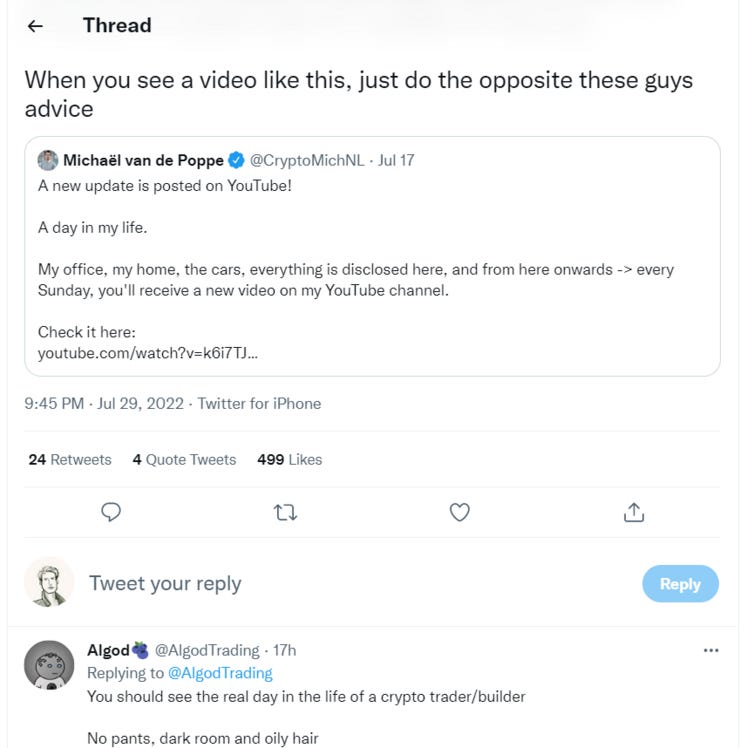
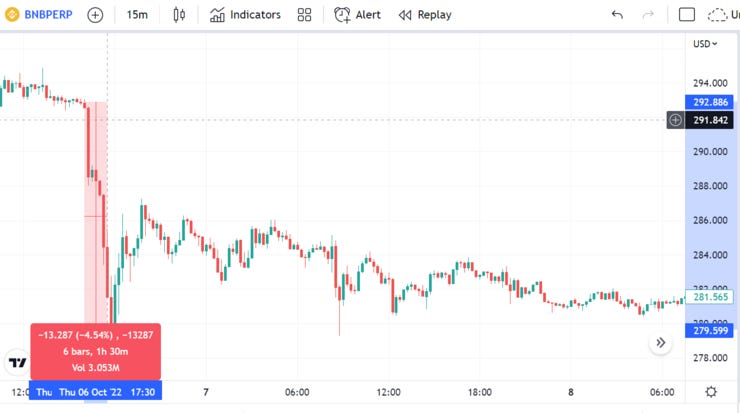
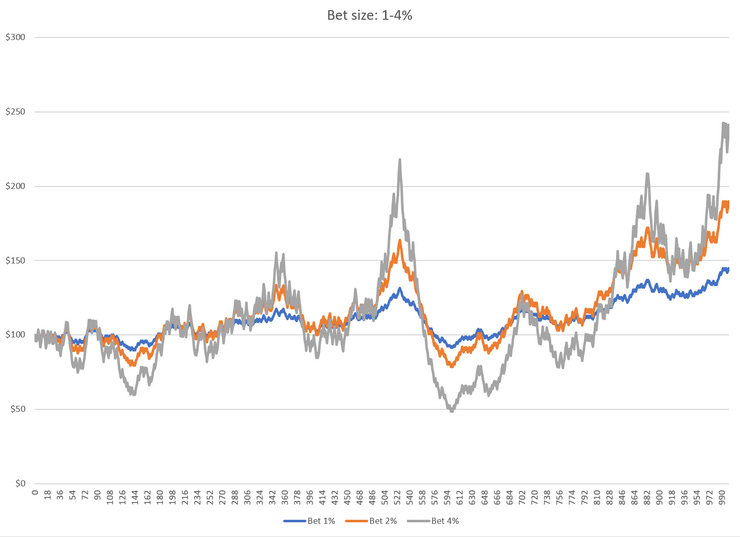
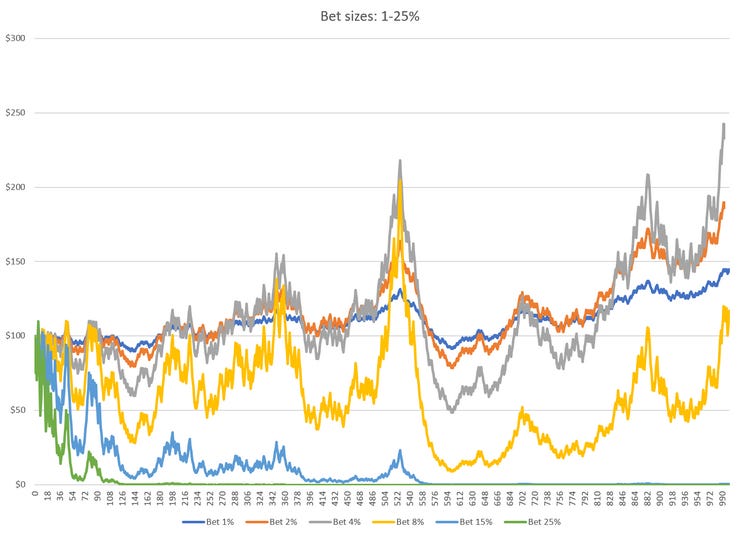

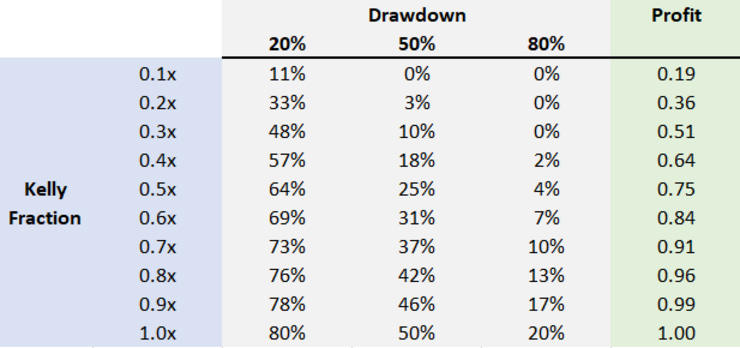
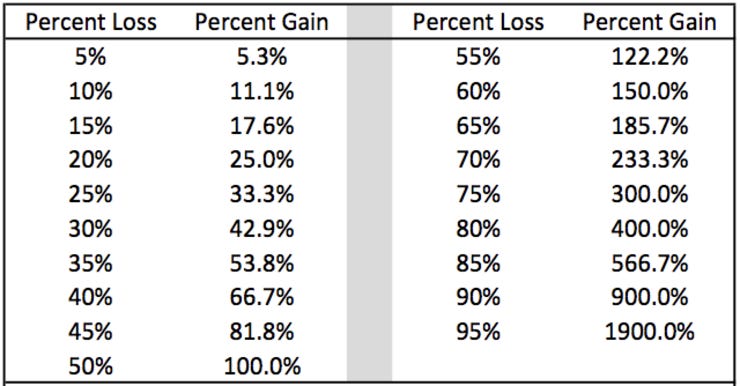

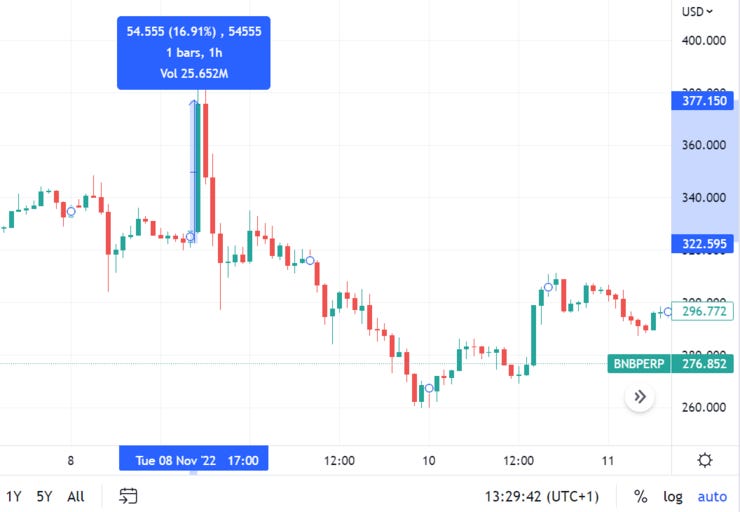
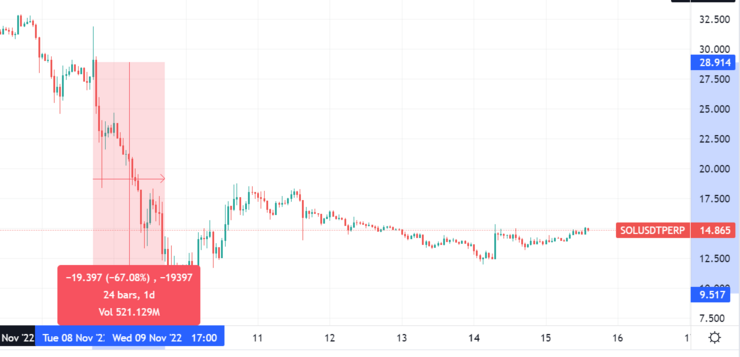

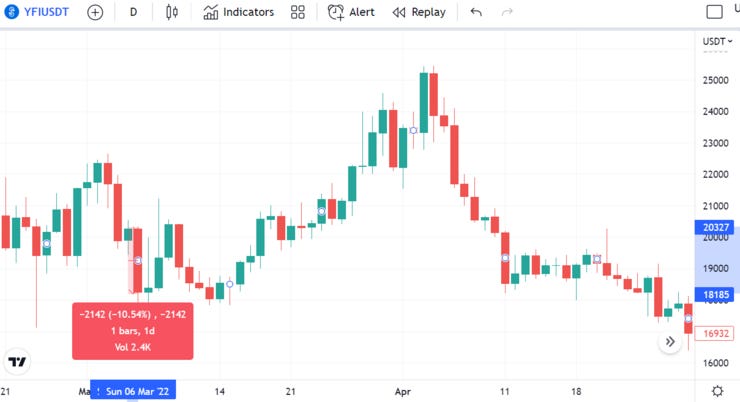
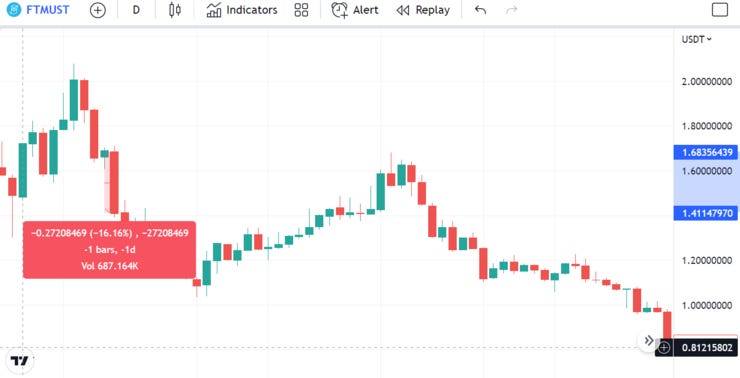
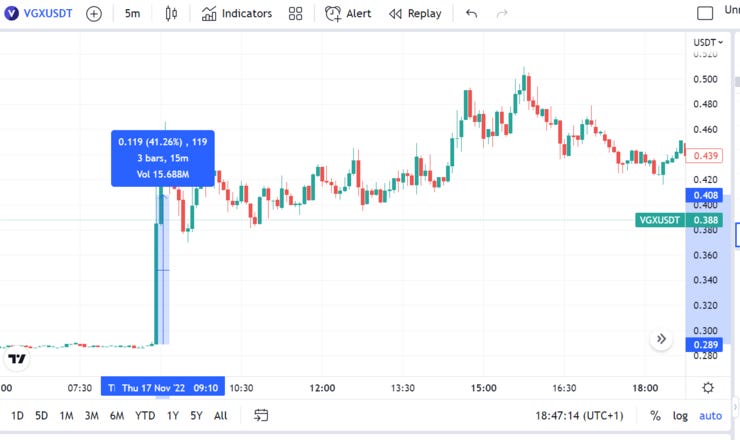
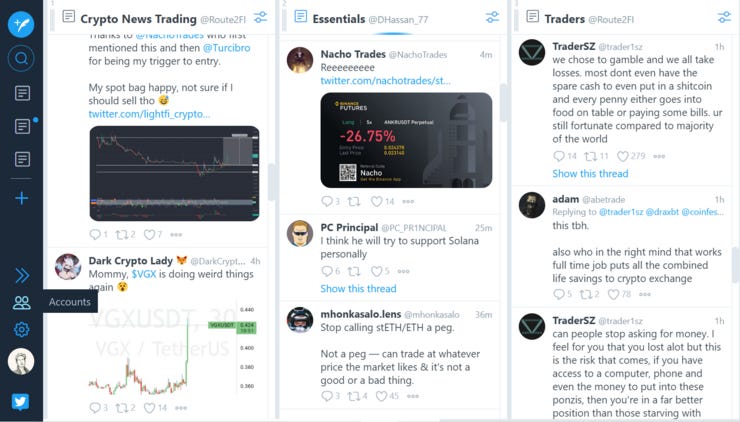


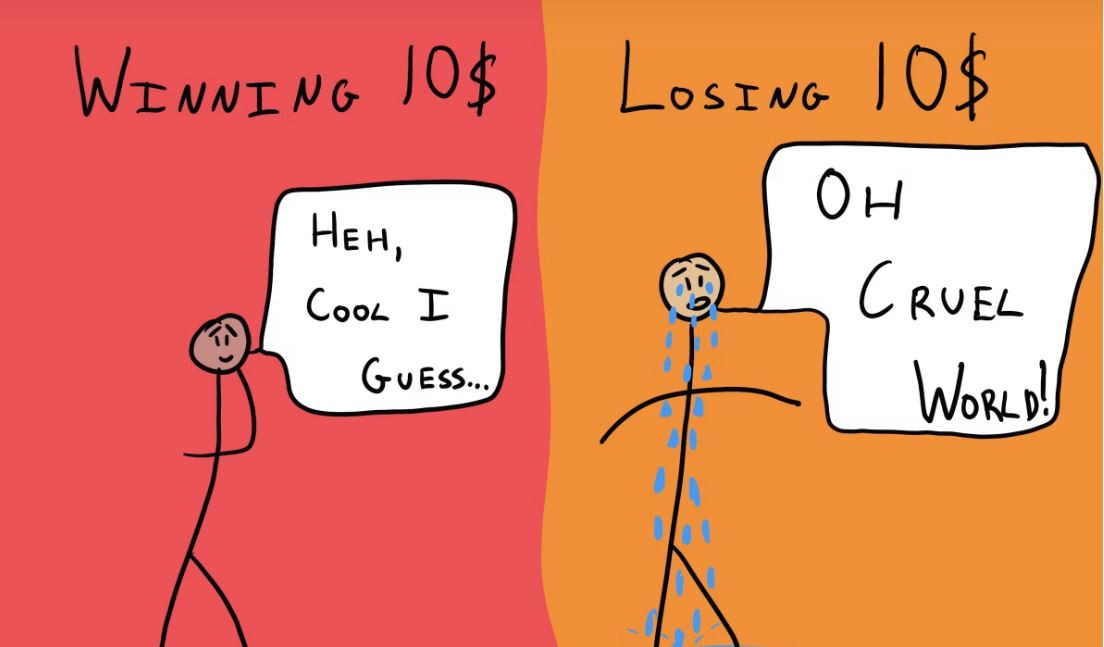
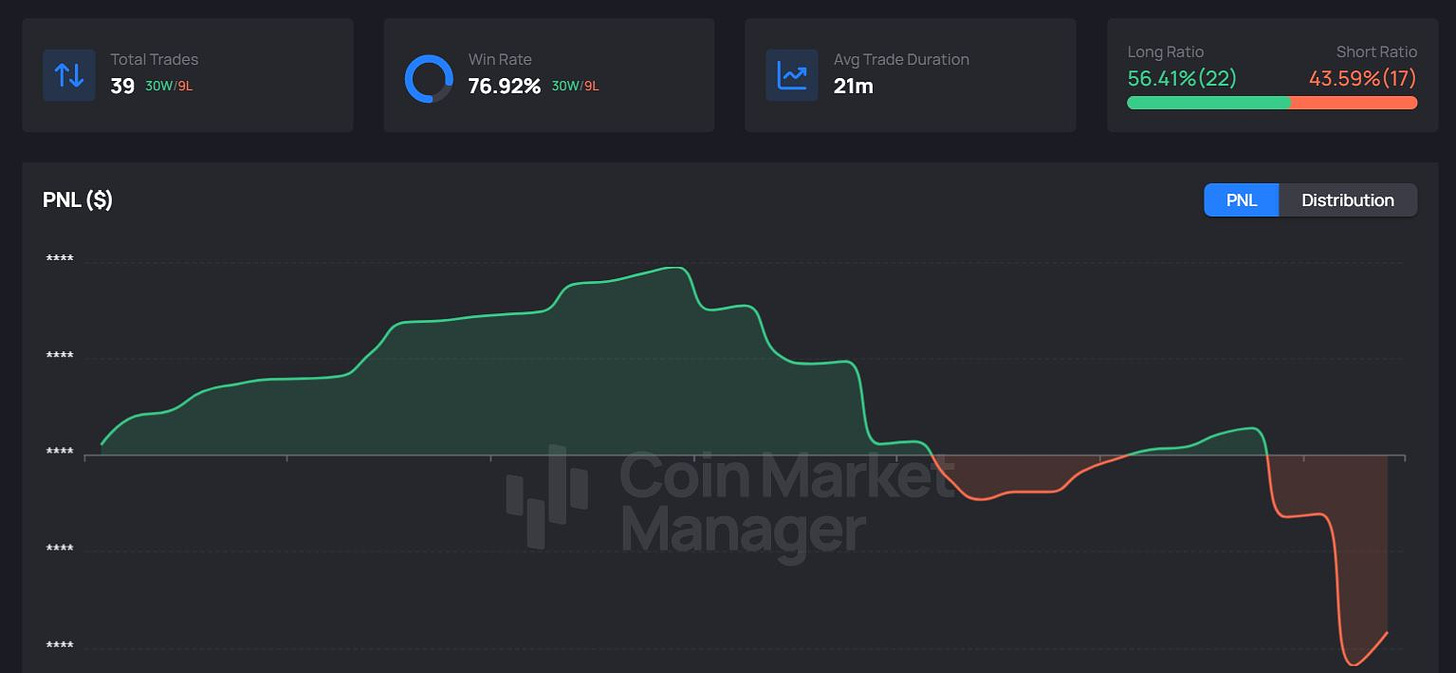
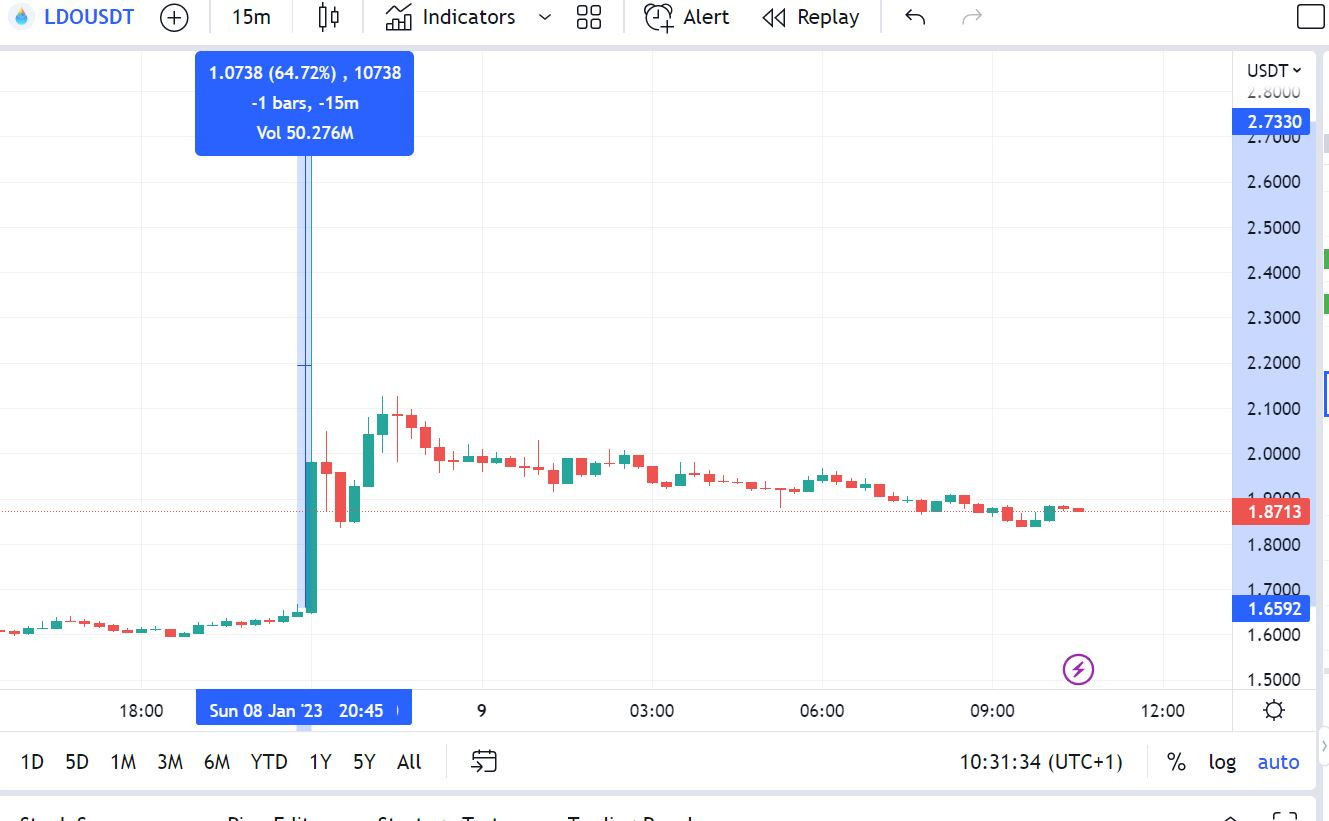



This was a great article covering so much!! I always appreciate your content, thanks for all the work you do!!
insane article, just astonishing! thx!!!